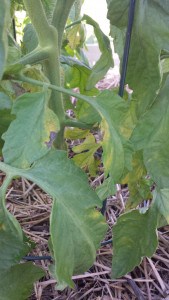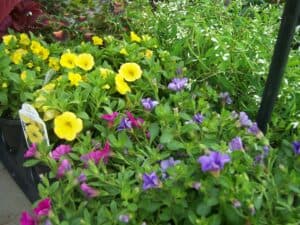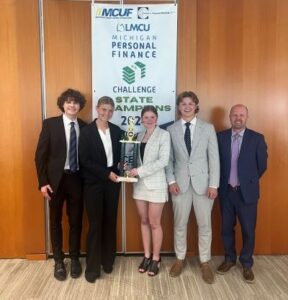
(Chelsea Update would like to thank Jennifer Fairfield, owner of The Garden Mill, for the information in this column. This is the second part of a two-part column.)
Watering and fertilizing
I know it seems impossible that we should need to be worried about our gardens drying out after all the rain we got in June and early July, but with the lack of rain typical of August, keeping things watered is likely to be one of our biggest challenges this month.
This goes for containers even more than in-ground gardens. All this sunshine dries things out quickly, so be sure to provide water to your containers regularly, and don’t forget to fertilize too. When you are watering containers regularly, you can be flushing out fertilizer, so you should be adding it back in to keep your plants growing and producing.
Many diseases got a running start in our gardens this year because of the cool, wet weather we had all the way into July. The warmer weather we’ve been experiencing is helpful in slowing down their progression, for the most part, but if you have signs of disease, don’t get complacent just because it is warmer and isn’t raining every day.
I have seen signs of problems in my tomatoes and cucumbers, so have picked up my spraying regimen and am alternating a copper spray (Espoma Garden Fungicide) with the fungicide I have been using (Serenade Garden Disease Control). This is the regimen recommended by the Missouri Botanical Gardens for dealing with both fungal and bacterial diseases, which can be hard to distinguish between, in their guide to tomato problems.
It is my hope that I can keep the diseases at bay long enough to harvest lots of great produce.
In addition to spraying, removing any leaves, stems and fruit showing signs of disease as soon as possible will help slow down the progression of the disease. Keeping insects under control is also helpful, as they carry diseases from plant to plant as they search for the best-tasting meal.
Harvesting
The best part of August is that we get to harvest so much great stuff to eat from our gardens. I’m picking beans every day and zucchini about every-other day. The kale is going crazy, peppers are really starting to come in, and we’ve got lots of basil and dill. My tomatoes are a little later than usual because I was late getting them in the ground, but they are working on ripening fruit – I can’t wait.
I’ve also begun harvesting garlic, which are looking great. I think all the rain may have helped them get really big this year, which is fabulous.
Planting
To extend your harvest, there are a number of things you can plant now for harvest before frost sets in.
August is a great time to plant beets, radishes, lettuces, spinach, Swiss chard, kale, and peas for harvest into the early fall.
Check your seed packet for the “days to maturity” to determine how late you can plant and still harvest before frost sets in. To figure out your safe planting timeframe, just count backwards from your average first date of frost usually around Oct. 1 for our area.
Bird Baths and feeders
A lack of water and higher temperatures are hard on our feathered friends, so be sure to keep your bird baths cleaned and filled. If you are feeding hummingbirds (if not, why not – they are so fun to watch), keep their feeders cleaned out and filled weekly.



















